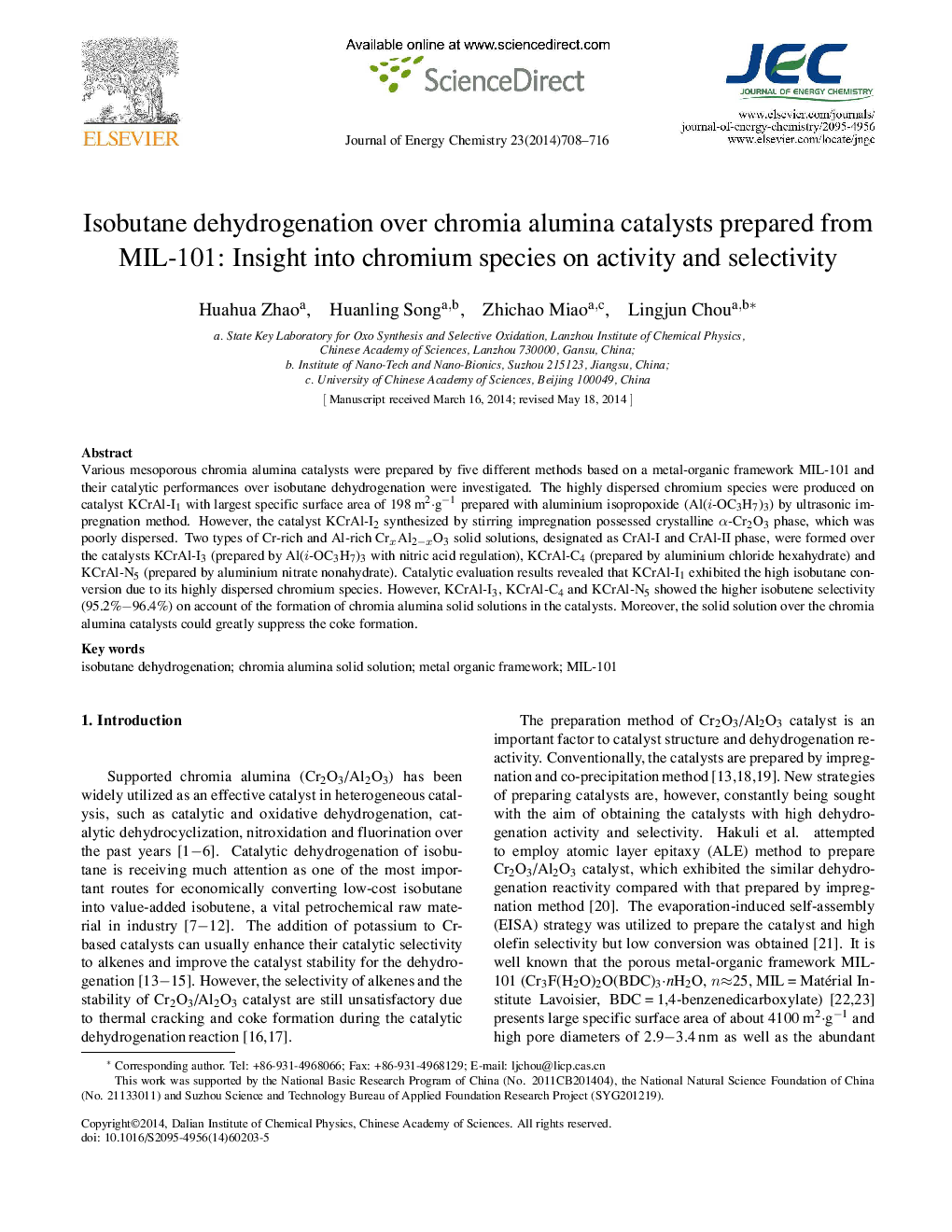| Article ID | Journal | Published Year | Pages | File Type |
|---|---|---|---|---|
| 63940 | Journal of Energy Chemistry | 2014 | 9 Pages |
Various mesoporous chromia alumina catalysts were prepared by five different methods based on a metal-organic framework MIL-101 and their catalytic performances over isobutane dehydrogenation were investigated. The highly dispersed chromium species were produced on catalyst KCrAl-I1 with largest specific surface area of 198 m2·g−1 prepared with aluminium isopropoxide (Al(i-OC3H7)3) by ultrasonic impregnation method. However, the catalyst KCrAl-I2 synthesized by stirring impregnation possessed crystalline α-Cr2O3 phase, which was poorly dispersed. Two types of Cr-rich and Al-rich CrxAl2–xO3 solid solutions, designated as CrAl-I and CrAl-II phase, were formed over the catalysts KCrAl-I3 (prepared by Al(i-OC3H7)3 with nitric acid regulation), KCrAl-C4 (prepared by aluminium chloride hexahydrate) and KCrAl-N5 (prepared by aluminium nitrate nonahydrate). Catalytic evaluation results revealed that KCrAl-I1 exhibited the high isobutane conversion due to its highly dispersed chromium species. However, KCrAl-I3, KCrAl-C4 and KCrAl-N5 showed the higher isobutene selectivity (95.2 %–96.4%) on account of the formation of chromia alumina solid solutions in the catalysts. Moreover, the solid solution over the chromia alumina catalysts could greatly suppress the coke formation.
High isobutene selectivity was obtained over the mesoporous chromia/alumina catalysts, which were prepared based on a metal-organic framework MIL-101 as the chromium source in the experiment.Figure optionsDownload full-size imageDownload as PowerPoint slide
